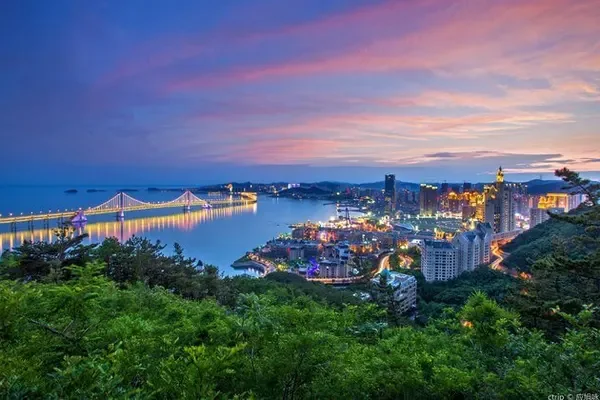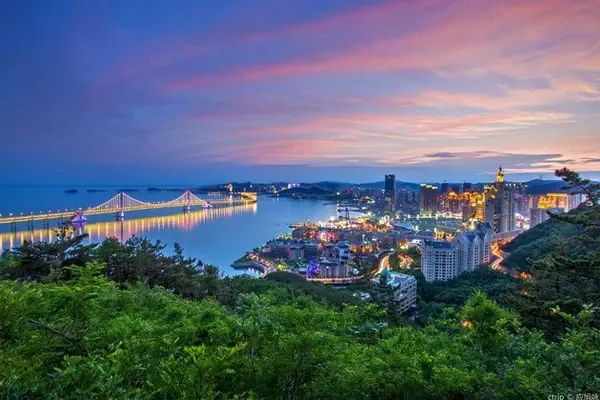Crossing the Sea of Death - Taklamakan Desert
The Taklamakan Desert is located in the center of the Tarim Basin. It is more than 1,000 kilometers long from east to west and 400 kilometers wide from north to south. It is impossible to accurately determine the specific area because it is a mobile desert. In any case, it is also the second largest desert in the world after the Sahara Desert in Africa. Taklimakan means "going in but not coming out" in the Uighur language. Now there are two highways across the Taklamakan Desert from north to south. One is a desert road from Luntai in the north to Minfeng County in the south. It was opened to traffic in the late 1990s and is now numbered as National Highway G216, with a total length of 566 kilometers. The other is on the west side of G216, from Hotan County to Alar City. It was completed and opened to traffic in 2007. Now it has become part of the national highway G217 that runs from north to south in Xinjiang. The city of Alar is mentioned here and I want to focus on it. This city is the seat of the First Division of the Production and Construction Corps. The predecessor of this division was the 359th brigade of the famous Nanniwan production. After the liberation of the whole territory of Xinjiang, the order of the Party Central Committee was implemented, and all workers were transferred to production and construction on the spot. There is also a third desert road (red line) under construction, which is expected to be opened to traffic soon from Yuli County to Qiemo County. This desert road is at the easternmost part of the Taklamakan Desert.


The construction of these desert roads benefited from the exploration and development of large oil fields in this vast sand sea. Now there are two oil fields in the Taklamakan Desert, one in the south and one in the north. The north is called Lunnan Oilfield, and the south is called Tarim Oilfield. Since the Taklamakan Desert is a fluid desert, it is a big problem to prevent the road from being swallowed up by the desert after the road is built to prevent wind and sand fixation. On both sides of the G216 desert road we walked, there are four- and five-element red willows, Haloxylon, Azalea and other drought-tolerant plants. According to incomplete statistics, there are more than 20 million plants. Every four kilometers, you will see a small house with blue walls and red roofs, which is a water pumping station. There are deep wells for watering these red willows. The irrigation adopts the drip irrigation technology of Israel, and each pump station is manned all the year round. From the bottom of my heart, I applaud these people who have silently contributed to the construction of the motherland in the depths of the desert.







After leaving Luntai County and embarking on the G216 desert highway, the eyes were still full of oases. After walking for about ten kilometers, there are only poplar trees left on both sides of the road. About 50 kilometers away, there is a "Luuntai Populus euphratica Park". In fact, you don't need to go into Populus euphratica Forest Park, because there are naturally growing Populus euphratica forests on both sides of the road for about 40 to 50 kilometers from here. Some people say that you have to wait until autumn to see the Populus euphratica forest, but I don't think that's necessarily the case. It is said that Populus euphratica will not die for a thousand years, and after less than a thousand years after death, it will be immortal for a thousand years. Looking at the dead and immortal Populus euphratica is more simple and vicissitudes than looking at the luxuriant Populus euphratica.
























Friendly reminder: The speed limit on the desert road is almost 60km/h. No travel at night.
After crossing the Tarim River, there are fewer and fewer Populus euphratica trees, leaving only the vast sandy sea and the red willows on the roadside. The Tarim River is known as the mother river of Xinjiang. It gathers the melted water from the Tianshan and Kunlun Mountains to form a river with a total length of 2376km. It is the longest inland river in our country, that is, the river that did not flow into the sea in the end, and suddenly disappeared in Lop Nur. The vast sea of sand, the first glance is shocking, but the second glance is fear. The sand dunes stretch as far as the eye can see, except for the undulating light and dark sides of the sand dunes, the rest is a ridge of wind blowing through the sand ridges, and nothing else can be seen. I parked on the side of the road for a short time, trying to find the trace of the desert camel team, and I knew who would use camels for transportation when there was a road. But even the oil drilling rig and kowtow machine can't be seen. Later, I heard from a classmate of mine who worked in the Xinjiang oilfield that the oil wells were deep in the desert, and the workers went to the wells by crawler desert vehicles.










There is a small town called Tazhong Town at 335km of the G216 Desert Highway. This is the logistics supply base of the desert oil field and the transfer station for workers to rest. There is no service area on the entire road, and this is the only place where vehicles can be refueled (be sure to fill up the fuel tank here). In order to be able to see the sunset in the desert, and because there is no roadside parking along the way, we also want to feel the feeling of climbing the sand mountain, so we temporarily decided to live in the tower. There are two hotels in Tazhong Town. One is called Hanhai Shibei, and the other is called Shaliu Hotel. We live in Hanhai Shibei. The hotel is on the side of the road. We jokingly called it the "New Dragon Inn". It is very good to have an inn with a separate bathroom and hot water for bathing in the desert. It was almost eight o'clock after dinner, but the sun was still high. I checked my phone and the local sunset time is 21:50. Walk out of the hotel at 9:00 and start to climb the sand hill. The soft sand is very difficult to walk one step back half a step. It is close to the sunset and finally climbs to the top of the sand dune to experience the scenery of "the desert is solitary, the long river is setting the sun". It is not in vain This line.








The next day we continued our journey, but there was still a sea of sand on both sides of the road. At 18 kilometers away from Minfeng County (0 kilometers away from the desert road), we finally walked out of the vast sand sea. Unexpectedly, after leaving the desert, there is a swamp oasis, where cows and horses graze leisurely. The desert no longer goes south, and the swamp does not go north. For thousands of years, such a balance has been maintained. Nature is so magical. We entered Freeman World and took a second throat swab at the roadside checkpoint. Did not stop in Minfeng County and went straight to Hotan.





